The Declaration of Independence world is familiar with is that of a nascent United States of America freeing itself from the colonial masters and taking the destiny of its new nation in its own firm hands. We in Nepal always take it for granted that we were never colonized by the British which left us poorer perhaps due to isolation but prouder as a sovereign nation. It was not always so and had the twists and turns of late 19th Century diplomacy not gone our way; we might have been a part of Independent India today. So, when and how did we actually declare ourselves independent from the Raj, the British rule in the Indian Subcontinent?
| Map showing Nepal before the Treaty of Sugauly |
The prelude to this important moment in our nation’s history started with the Rana prime minister Jung Bahadur Rana cleverly positioning himself as a friend and ally of the British. History had already taught him how his foolish grand-uncle Bhimsen Thapa the prime minister of an ever expanding Gurkhali nation had locked horns with the East India Company. The Anglo-Nepal War of 1814-16 had ended in a humiliating defeat where not only egos were bruised but large chunks of Nepalese territory had to be ceded to the Raj under the Treaty of Sugauly. Jung Bhadaur Rana was not going to repeat this sad state of affairs. He would befriend the British and prove his loyalty.
The grand prize he received from the British was the trail-blazing invitation to visit England as ambassador extraordinary and plenipotentiary of the Kingdom of Nepal in 1850 A.D., decades before any of the rulers of the Indian States were to be thus invited. Jung capitalized on this opportunity and further enhanced his relationship with both the British royalty as well as the directors of the East India Company. In 1857 A.D. he cleverly allied himself with the hard-pressed British forces against the rebellion in India and went personally to defeat the armies of the rebellious nation of Oudh (Awadh) in Lucknow. The British rewarded him with the return of some of the lost territories. He was also awarded the tile of Maharajah of Kaski and Lamjung by the Nepalese king. His rule was now secure.
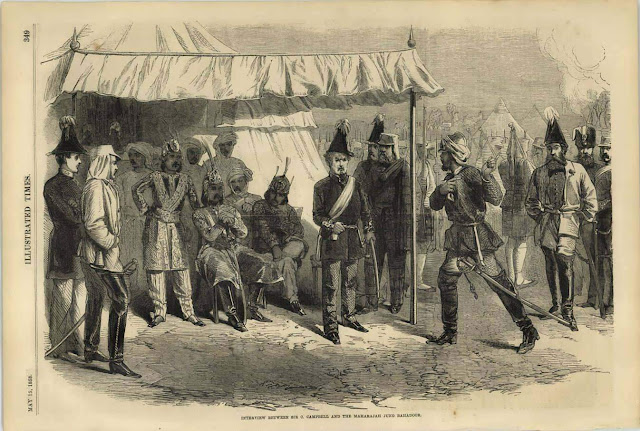 |
| Jung Bahadur Rana with Colin Campbell, Commander-in- Chief of British forces, in Lucknow during Mutiny |
Big Game Hunting was an important domain in the wooing of British Royalty and Viceroys of India. Plentiful games in the Nepal Terai meant that the rulers enamoured with the sport of hunting made a bee-line to visit Nepal. Unrolling the proverbial red carpet, the Rana rulers regaled the hunters in the Terai, but strictly made sure they would not visit Kathmandu Valley. They never handed over to the British the keys to the kingdom. After the death of Jung Bahadur Rana his successors took to heart the lessons taught by Jung and continued the tradition of organizing for the British royals lavish hunting expeditions in the Nepal Terai.
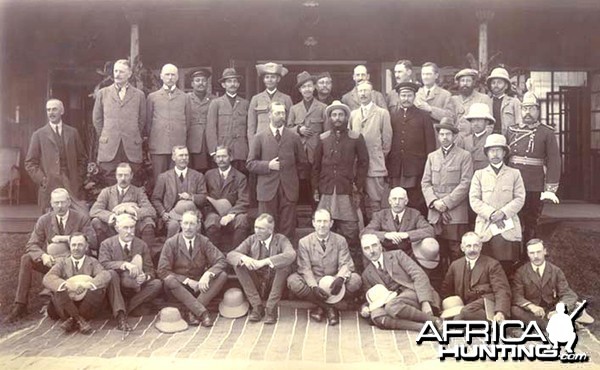 |
| King George V in hunting expedition in Nepal Terai with Maharajah Chandra |
Maharajah Sir Chandra Shumsher J. B. Rana was the shrewdest of the Rana prime ministers and it is to his credit that we have got an independent Nepal today. Viceroy Lord Curzon had expressed his desire to hunt tigers in Nepal Terai during the tenure of Maharajah Bir Shumsher but due to his failing health the actual hunt was organized by Maharajah Dev Shumsher soon after the death of Bir and delegated his second in command Major General Chandra Shumsher to actually host the viceroy. The bond established between Curzon and Chandra led to Chandra’s getting an invitation to attend the Coronation Durbar held in Delhi organized by the viceroy to mark the accession of King Edward VII to the British throne in 1903 A.D. Chandra had positioned himself brilliantly once again as a friend of the British just like his uncle Jung Bahadur had done. He received a personal 19-gun salute there as the prime minister of Nepal.
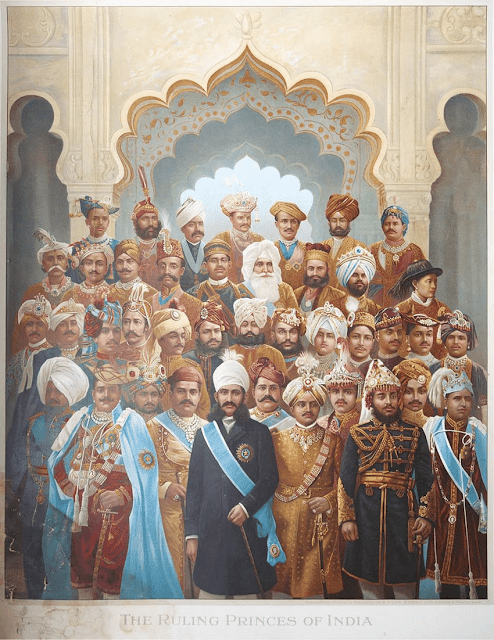 |
| Delhi Durbar of 1903 A.D. Maharajah Chandra (second from right) with rulers of Princely States |
In 1908 A.D. Maharajah Chandra Shumsher became the second prime minister of Nepal to be invited to visit Britain after Jung Bahadur Rana. Although his visit has not been as storied as that of his illustrious uncle, the diplomatic exchanges made Nepal ever more an indispensable ally of the British in Asia. King Edward VII gave him a private audience and awarded him the Order of the Knight Grand Cross of the Bath. Chandra would henceforth be addressed as “Sir”. He had meetings with Prime Minister Herbert Henry Asquith. He was awarded an honorary degree by Oxford University at its Ancaenia, a ceremonial high-point of its academic year, an approbation that even alluded King Mahendra later during his state visit, much to his chagrin.
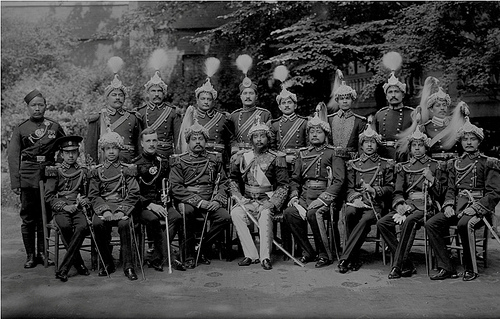 |
| Maharajah Chandra at Mortimer House, London, flanked by Juddha his brother (R) and Rudra his nephew (L) |
Chandra had another opportunity to attend the Delhi Durbar organized by Viceroy Charles Hardinge to commemorate the accession of King George V. This time the new king and his queen Mary would be attending the celebrations at Delhi in December of 1911. Following the celebrations Chandra hosted a hunting expedition for King George V in the Nepal Terai.
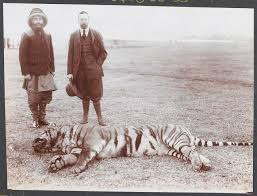 |
| Chandra with King George V |
The year was 1923 A.D. Chandra was basking in his laurels now. The British were going to sign a Treaty of Friendship with Nepal. The draft treaty came from Calcutta. Chandra was the first Rana ruler to matriculate and he did read and speak English. However, in matters of such gravity he needed a few courtiers to consult. Ram Mani Acharya Dixit, son of Shiromani Dixit, was the mandarin wielding power and commanding respect due to his proximity to Chandra. His father Shiromani had served the Shumsher clan with distinction as he was the tutor to the children of Commander-in-Chief Dhir Shumsher Jung Bahadur Rana, father of Chandra. During the premiership of Maharajah Bir Shumsher, Shiromani had performed many religious rites including the momentous yagya called Agnistone Hom at Kashi, today’s Varanasi.
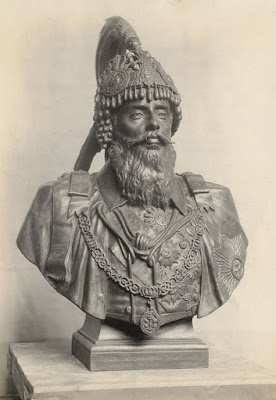 |
| Bust of Maharajah Chandra by Tonelli |
Chandra was now frowning at the draft document, stroking his salt and pepper beard that cascaded down to his chest, his piercing eyes burning into the parchment in concentration since he knew he could not afford to make any mistake on this treaty. His adviser Ram Mani had urged him to not concede on certain demands, to delete certain paragraphs and send the draft back to Calcutta. He smiled. Chandra remembered how his uncle Jung Bahadur liked to toy with the British and have his way at the end. Chandra was only 13 years old when Jung passed away but he did remember the resoluteness of the wily old ruler. Chandra nodded at Ram Mani in agreement and ordered him to send back the draft with the necessary changes made. The British concurred. Nepal had acquired its independence. Ages later people would remember that Treaty as the reason why Nepal was not absorbed into Independent India by the likes of Sardar Vallabhbhai Patel, the bane of the Indian princely states!


